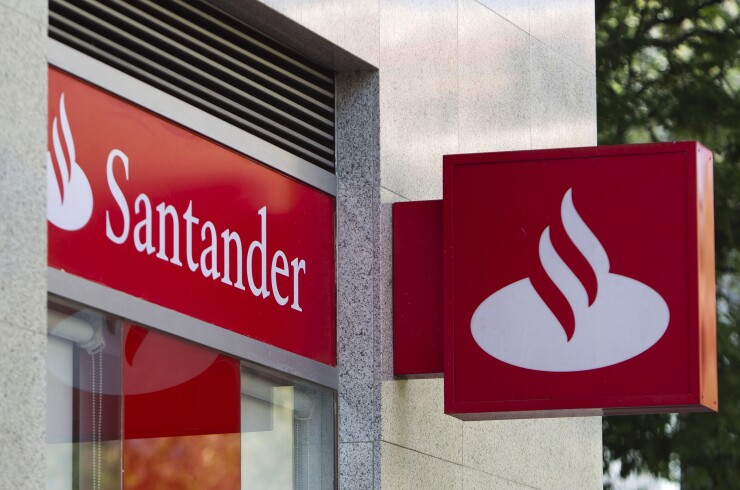The Office of the Comptroller of the Currency has downgraded Santander Bank’s Community Reinvestment Act rating to “needs to improve,” citing a string of recent legal issues with its lending practices.
The evaluation — made available in Santander branches Monday but not yet announced by the OCC — covers a three-year period after the financial crisis, from Jan. 1, 2011, through Dec. 31, 2013. Santander previously had a “satisfactory” rating.
Though backward-looking in scope, the examination has a number of immediate implications for Santander, the $85 billion-asset unit of the Spanish banking giant Banco Santander. Notably, it restricts the company from buying banks or opening branches outside of its Northeastern footprint.
The downgrade also shows how Santander’s prior legal troubles continue to haunt the Boston-based bank. In reviewing the company’s performance, the OCC took into consideration information from several recent enforcement actions.
Among them was
Santander would have received a passing, “satisfactory” rating, had it not been for the enforcement actions, according to the OCC evaluation.

Gwen Robinson, Santander’s director of corporate responsibility, said the exam paints an outdated picture.
“This exam is from quite a long time ago, 2011-2013, so some of the issues in it are dated,” she said. “While we are disappointed in the rating of ‘needs to improve,’ we have made a lot of progress since then.”
The “legacy” legal issues referenced in the evaluation have already been made public, and are being remediated, Robinson said.
The CRA downgrade is one of several issued to the nation’s biggest banks over the past year.
For instance, the $142 billion-asset
Wells Fargo is also expected to receive a downgrade to “needs to improve” from “outstanding,” according to a
For Santander, the CRA downgrade comes as the company has been under pressure from community advocates and city officials to boost lending in underserved areas.
Last week, the Committee for Better Banks, a consumer advocacy group, released a report alleging racial and economic discrimination in the company’s mortgage operations. Santander disputed the claims in a Reuters
In 2014, Santander
Notably, in the latest OCC examination, mortgage lending was an area of strength for Santander, which operates roughly 700 branches across the Northeast.
The company received a “high satisfactory” rating on a test of whether it meets the credit needs of its communities through its mortgage, small-business and community development lending divisions.
But regulators dinged Santander on a number of other key areas. For instance, the OCC gave the company low marks on its community investments and grant-making activity in the Boston metropolitan area and also in Connecticut.
“It was definitely an area of weakness, and we have invested a lot in this program” in recent months, Robinson said, noting that the company made $1.6 billion in CRA-eligible loans and investments in 2016 alone.
Santander also received a low marks on its retail banking services in New York, New Jersey and Connecticut. The company was evaluated, in part, on the distribution of its branches in low-income neighborhoods, as well as the types of services those offices provide.
Robinson noted that Santander has begun offering financial education classes across its branch network, which should boost its CRA rating down the road. It has also opened several new branches in low-income neighborhoods in Boston and New York, she said.
Santander has not yet confirmed the date of its next CRA examination, which will cover Jan. 1, 2014, through Dec. 31, 2016, though the review is expected to take place in the coming year. Also unclear is how long it will take before the new results are made public.
The results issued Monday were from an examination that took place in 2014. The company’s prior examination, for the period from 2008 to 2010, was conducted by the now-defunct Office of Thrift Supervision, which was consolidated into the OCC in July 2011.
While Robinson said the rating from the OCC is disappointing, she emphasized that Santander continues to make progress on its community development efforts — and that the evaluation also includes constructive guidance.
“Getting this feedback is important, because it does tell us where we need to put extra effort in,” she said.





